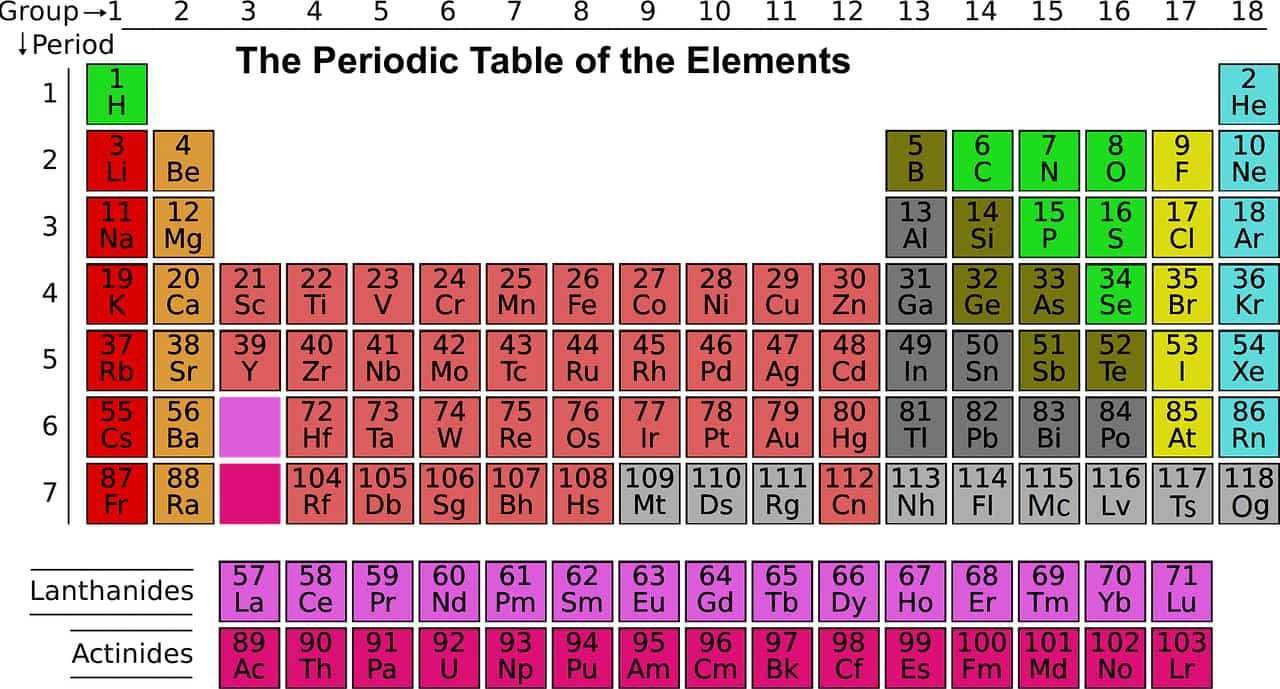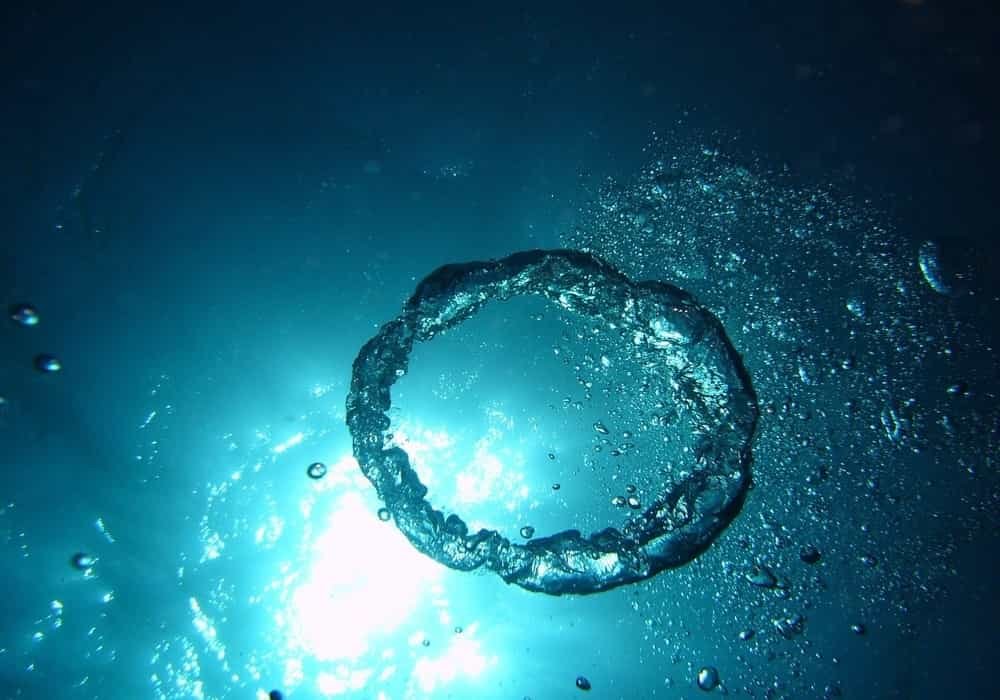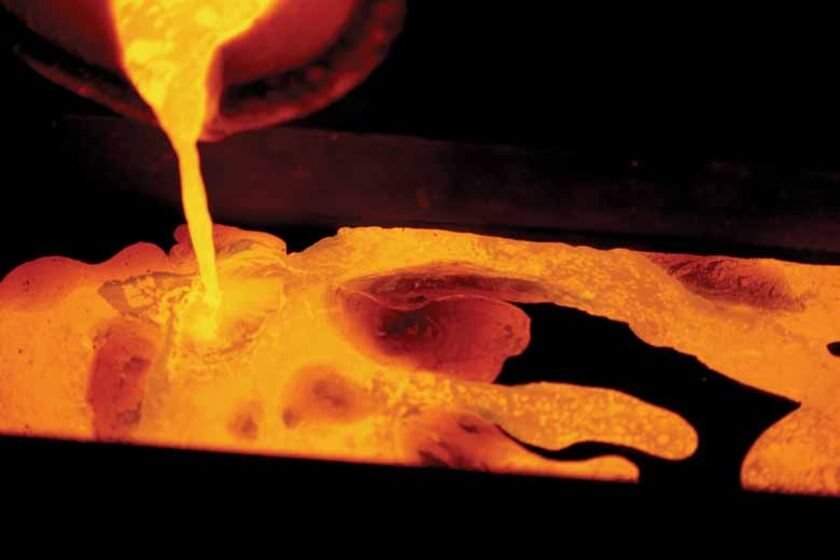Oxygen is the chemical element with atomic number 8, symbol O
It is the head of the chalcogen group, often referred to as the oxygen group. Discovered independently in 1772 by the Swede Carl Wilhelm Scheele in Uppsala, and in 1774 by Pierre Bayen in Châlons-en-Champagne as well as by the Briton Joseph Priestley in Wiltshire, oxygen was named so in 1777 by the French Antoine Lavoisier and his wife in Paris from the ancient Greek ὀξύς / oxys (“acute”, that is to say here “acid”), and γενής / genês (“generator”), because Lavoisier mistakenly thought – oxidation and acidification being connected -:
“We have given the base of the breathable portion of the air the name oxygen, deriving it from two Greek words ὀξύς, acid and γείνομαι, I generate, because indeed one of the most general properties of this basis [Lavoisier speaks of oxygen] is to form acids by combining with most substances. We will therefore call oxygen gas the union of this base with the caloric”.
Oxygen is the third most abundant chemical element in the universe (after hydrogen and helium).
Produced 3.5 billion years ago by photosynthetic cyanobacteria at first rudimentary as a toxic by-product in an anaerobic world, it has become, very slowly (3.5 billion years …) but surely, essential to the evolution of the Earth, to the development of life and to death…
Oxygen 18
Oxygen-18 is a paleoclimatic indicator used to know the temperature in a region at a given time: the higher the 18O / 16O isotope ratio, the lower the corresponding temperature. This ratio can be determined from ice cores, as well as aragonite or calcite from some fossils.
This process is very useful to confirm or deny a theory about natural terrestrial climate changes like the Milanković parameters.
As a stable isotopic marker, it has been used to measure the unidirectional flow of oxygen absorbed during photosynthesis by the phenomenon of photorespiration. It has been shown that, before the CO2 increase of the industrial age, half of the oxygen emitted by the leaves was reabsorbed. This reduced the yield of photosynthesis by half (Gerbaud and André, 1979-1980).
Properties of oxygen
Under normal temperature and pressure conditions, oxygen is an odorless and colorless gas. It is also the most paramagnetic of gases. Liquid oxygen, on the other hand, is also paramagnetic.
Oxygen is a capital element for living things because it is at the center of the respiration of many living beings. It also participates in combustion processes. Oxygen is the most abundant element in the earth’s crust and one fifth of the earth’s atmosphere is composed of oxygen in the form of diatomic gas, O2, but also, in trace amounts, in the form of ozone O3.
One of the main features of oxygen is that it forms oxides with almost all other elements except helium, neon, argon, and krypton.
Use of oxygen
It is possible to isolate oxygen from air by distillation or by fractional liquefaction. Oxygen is used primarily in the manufacture of metals, especially steel, as well as chemicals that require oxidation. Another major application is rocket propulsion.
Oxygen can be separated from air by fractional liquefaction and distillation. The main applications of oxygen are in order of importance:
1) fabrication of steel and other metals.
2) manufacture of chemicals by controlled oxidation.
3) rocket propulsion.
4) medical and biological support.
5) extraction, production and manufacture of stone and glass products.
Health effects of pure oxygen
Breathing 50 to 100% concentrated oxygen at normal pressure for prolonged periods can damage the lung. Follow-up is necessary to ensure proper lung function in occupations where exposure to pure oxygen is common.
Every human being needs oxygen to breathe, but as in many cases too much is not good. If humans are exposed to large amounts of oxygen for a long time, damage to the lungs may occur. Breathing 50-100% oxygen at normal pressure for prolonged periods of time damages the lung. People who work with frequent or potentially high exposures to pure oxygen should test for proper lung function before starting their job and monitor afterwards. Oxygen is usually stored under very low temperatures and therefore one should wear special clothes to prevent freezing of body tissues.
Biological significance
Oxygen is one of the essential elements for life. It is a constituent of many molecules of biological interest (amino acids, etc.). The dioxygen, produced by photosynthesis, which recovers solar energy, is reused in the processes of respiration (plants, animals, man) and combustion. It is central in the life of all aerobic species, for example for the respiration of humans and mammals (See hemoglobin in the file on iron). It is useful for resuscitating the sick (first aid kits). At the same time, it produces radicals (superoxide O2 •- radicals – and hydroxyl HO •) which undermine biological molecules and cells, cause mutations, trigger diseases, lead us to old age and ultimately to death. Magnificent chemical Janus then. Antioxidants (vitamin C, 5 vegetables and fruits a day, etc.) obviously slow down these processes, but all human are… fatal.
Ozone is toxic, at ground level where we live … but plays a vital role in absorbing the ultraviolet radiation emanating from the sun and in protecting life on earth. The ozone formation cycle (known as Chapman’s) is disrupted by radicals, particularly of human origin – “chlorofluorocarbons”, NOx produced by airplanes at very high altitude – (hence the enlargement of the ozone hole ). The awareness of this problem and the solutions that have been brought to it is surely the first example, in terms of chemistry, of the way in which humanity can know how to correct its excesses and its errors at the level of the planet. (Susan Solomon, Nobel Peace Prize 2007 with the IPCC).
Main compounds
These are oxygen O2 and its allotrope, ozone O3, water H2O, hydrogen peroxide or hydrogen peroxide H2O2 and peroxides, carbon dioxide CO2, derivatives of carbonates, silicates, nitrates, phosphates, sulphates etc. and metallic oxides, of very variable stoichiometries and of extremely varied and extensive properties: from basic to acid, (supra) conductive, ferroelectric, magnetic… The non-stoichiometry in oxygen is often crucial for the properties (high temperature superconductors).
Water will be considered in the hydrogen dossier. Carbon dioxide was discussed in the carbon dossier.
Dioxygen is a colorless and odorless gas. It reacts with all the elements except with rare gases. It is paramagnetic, spin S = 1. The theory of molecular orbitals simply explains the presence of two unpaired electrons in molecular orbitals ∏x, ∏y degenerate in energy, orthogonal and antilating. This is not the case with the Lewis model in its simplest form. The explanation of the paramagnetism of dioxygen could be qualified as a triumph of the theory of molecular orbitals … The two models are obviously very useful.
Oxygen in the periodic table
| Atomic number (Z) | 8 |
|---|---|
| Group | group 16 (chalcogens) |
| Period | period 2 |
| Block | p-block |
| Electron configuration | [He] 2s2 2p4 |
| Electrons per shell | 2, 6 |
Physical properties
| Physical properties | |
|---|---|
| Phase at STP | gas |
| Melting point | (O2) 54.36 K (−218.79 °C, −361.82 °F) |
| Boiling point | (O2) 90.188 K (−182.962 °C, −297.332 °F) |
| Density (at STP) | 1.429 g/L |
| when liquid (at b.p.) | 1.141 g/cm3 |
| Triple point | 54.361 K, 0.1463 kPa |
| Critical point | 154.581 K, 5.043 MPa |
| Heat of fusion | (O2) 0.444 kJ/mol |
| Heat of vaporization | (O2) 6.82 kJ/mol |
| Molar heat capacity | (O2) 29.378 J/(mol·K) |
Vapor pressure
| P (Pa) | 1 | 10 | 100 | 1 k | 10 k | 100 k |
|---|---|---|---|---|---|---|
| at T (K) | 61 | 73 | 90 |
Atomic properties
On Earth, it is present combined with various elements, in the form of mineral oxides or within the chemical functions of organic compounds (alcohol, ketone, carboxylic acid…). It is present in the air as dioxygen, in water combined with hydrogen and biological compounds. It is vital for most living organisms on earth.
| Atomic properties | |
|---|---|
| Oxidation states | −2, −1, 0, +1, +2 |
| Electronegativity | Pauling scale: 3.44 |
| Ionization energies |
|
| Covalent radius | 66±2 pm |
| Van der Waals radius | 152 pm |
Other properties
| Other properties | |
|---|---|
| Natural occurrence | primordial |
| Crystal structure | cubic |
| Speed of sound | 330 m/s (gas, at 27 °C) |
| Thermal conductivity | 26.58×10−3 W/(m·K) |
| Magnetic ordering | paramagnetic |
| Magnetic susceptibility | +3449.0·10−6 cm3/mol (293 K) |
| CAS Number | 7782-44-7 |
History
| History | |
|---|---|
| Discovery | Carl Wilhelm Scheele (1771) |
| Named by | Antoine Lavoisier (1777) |
Oxygen was independently discovered by Scheele in 1772 and Priestley in 1774. Its name was given to it by Lavoisier in 1777, from the Greek “oxus”, “acid”.
Main isotopes of oxygen
| Main isotopes of oxygen | |||||||||||||||||||||
|---|---|---|---|---|---|---|---|---|---|---|---|---|---|---|---|---|---|---|---|---|---|
| |||||||||||||||||||||
Periodic Table of Elements | Complete List of Chemical Elements by Group, Name, Symbol, Color and Type

Sources: Royal Society of Chemistry, Chemicool, Live Science, Royal Society of Chemistry
Photo credit: Pixabay


